A Room of One’s Own
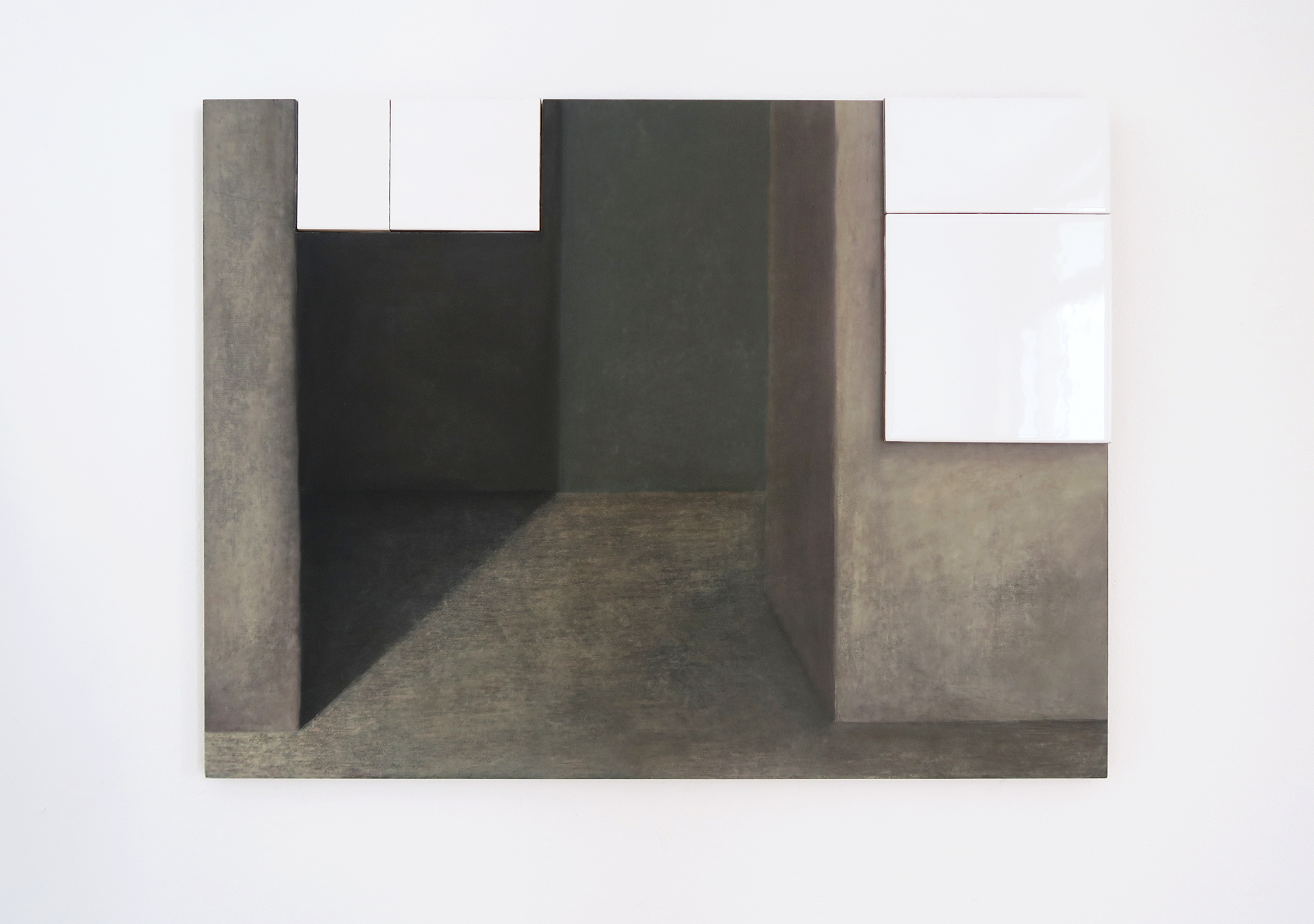
A Room of One’s Own, 2019; pastel on wood, ceramic tile; 45 × 60 cm
Plǝt-, Amsterdam

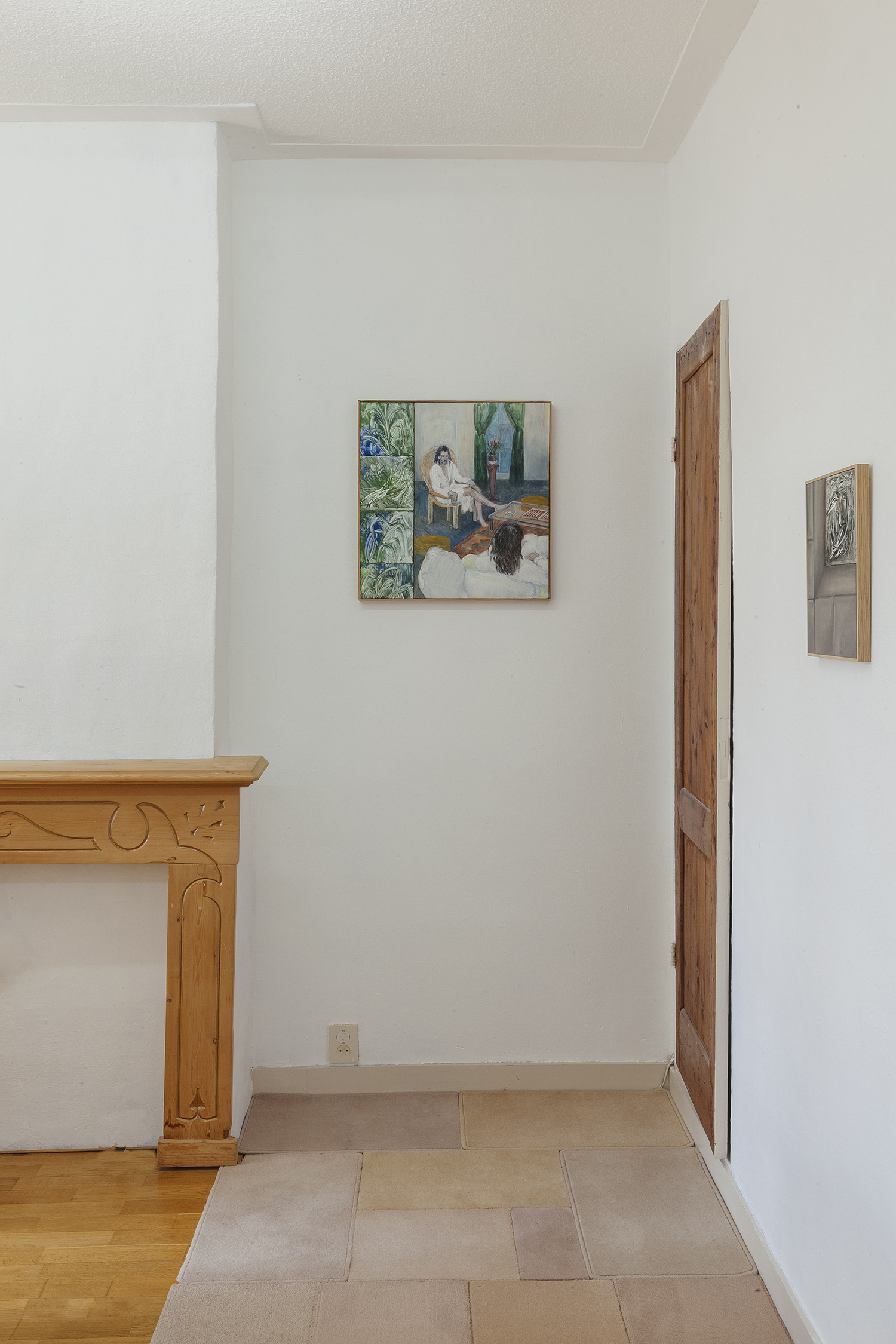
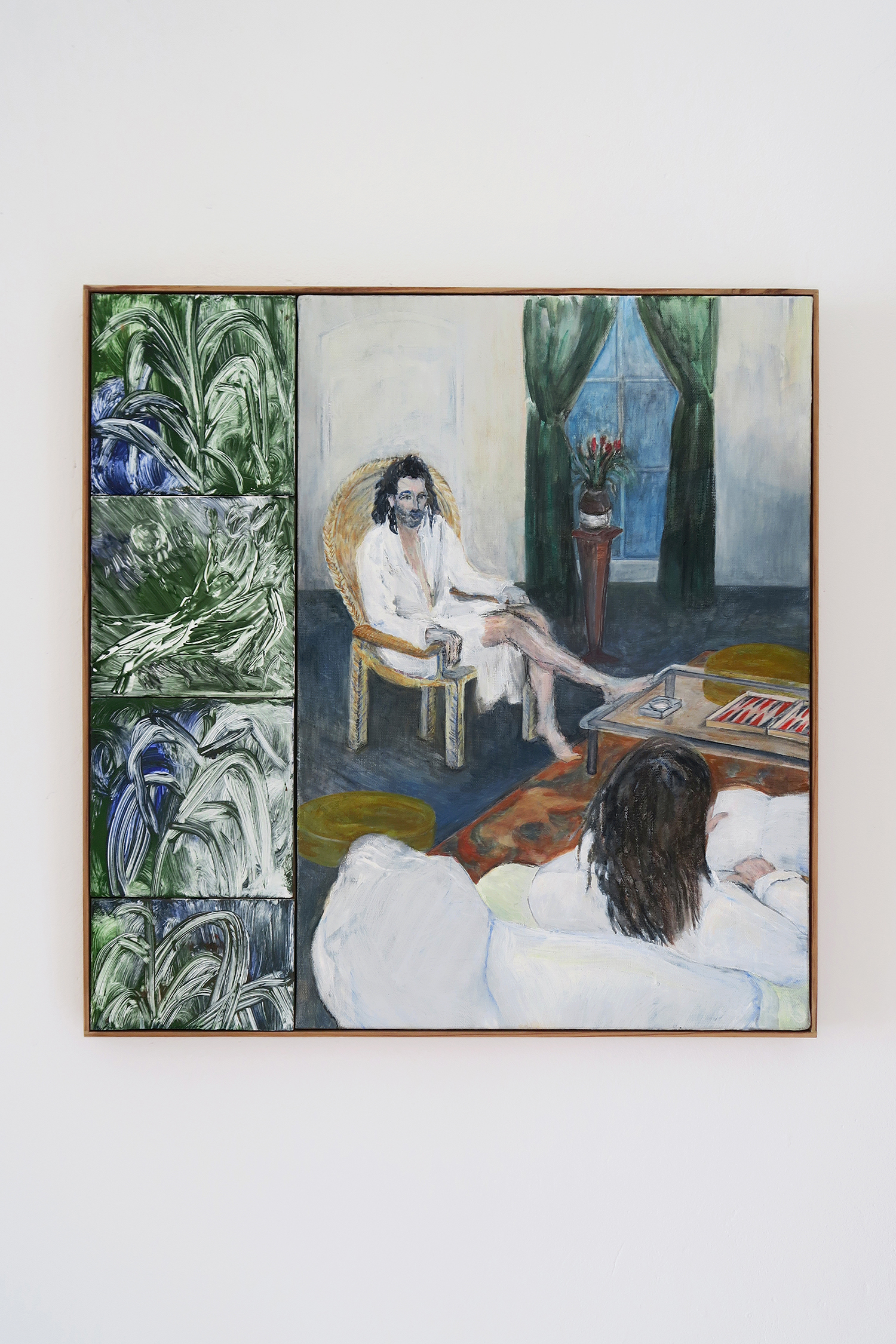
Raphaël, 2019 ; watercolour on canvas, painted eathenware tiles, artist frame in oak wood; 56,5 × 54,5 cm
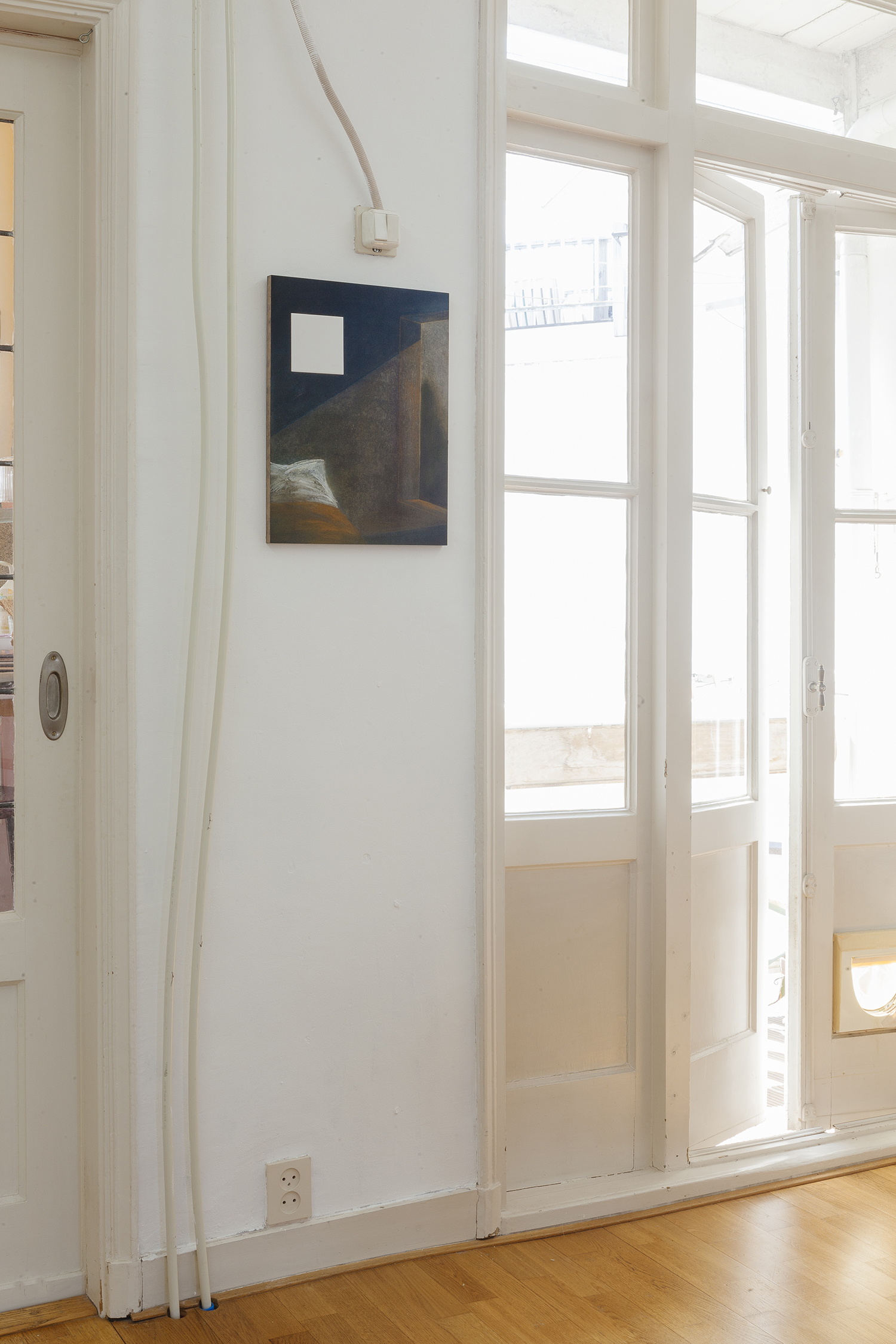
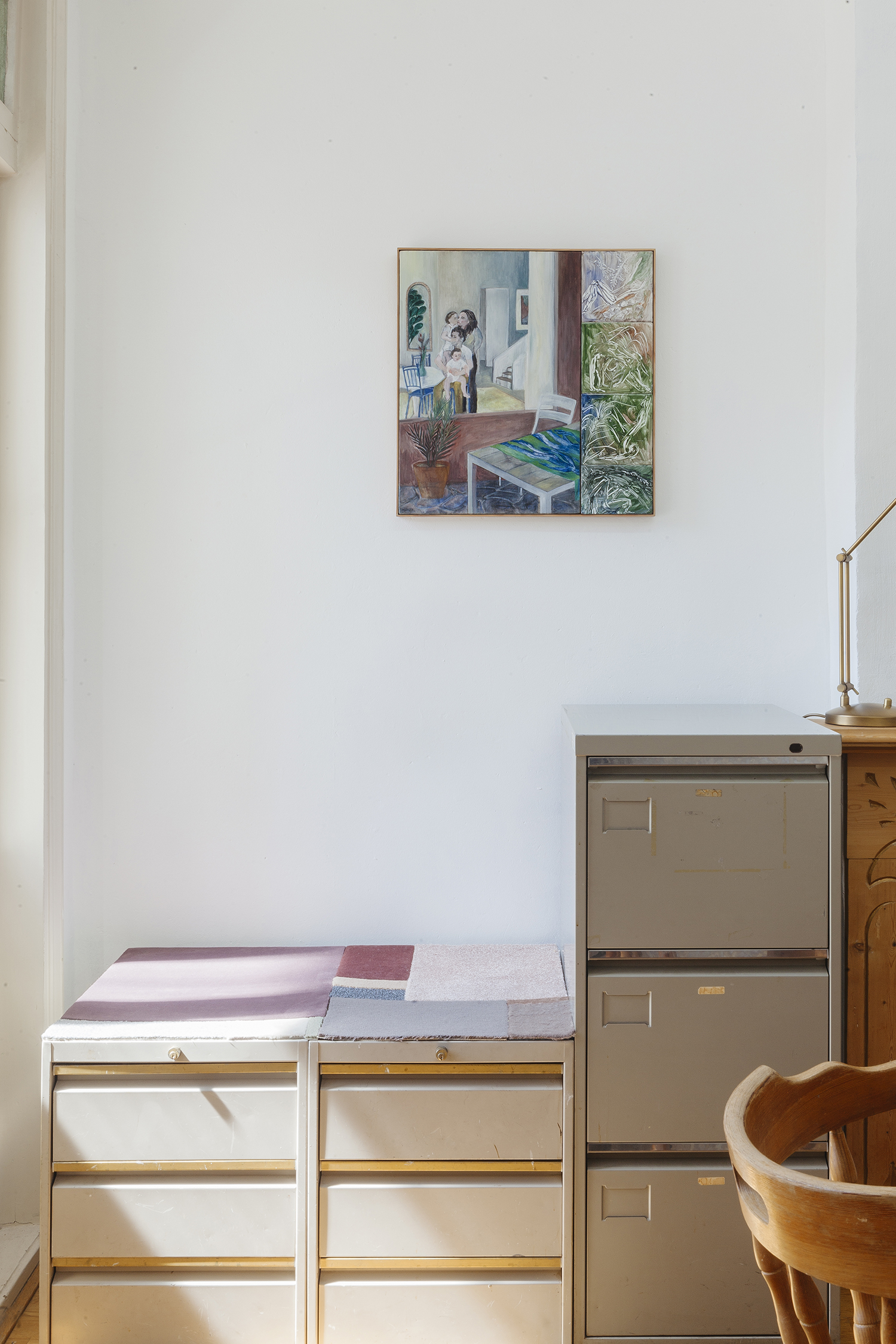
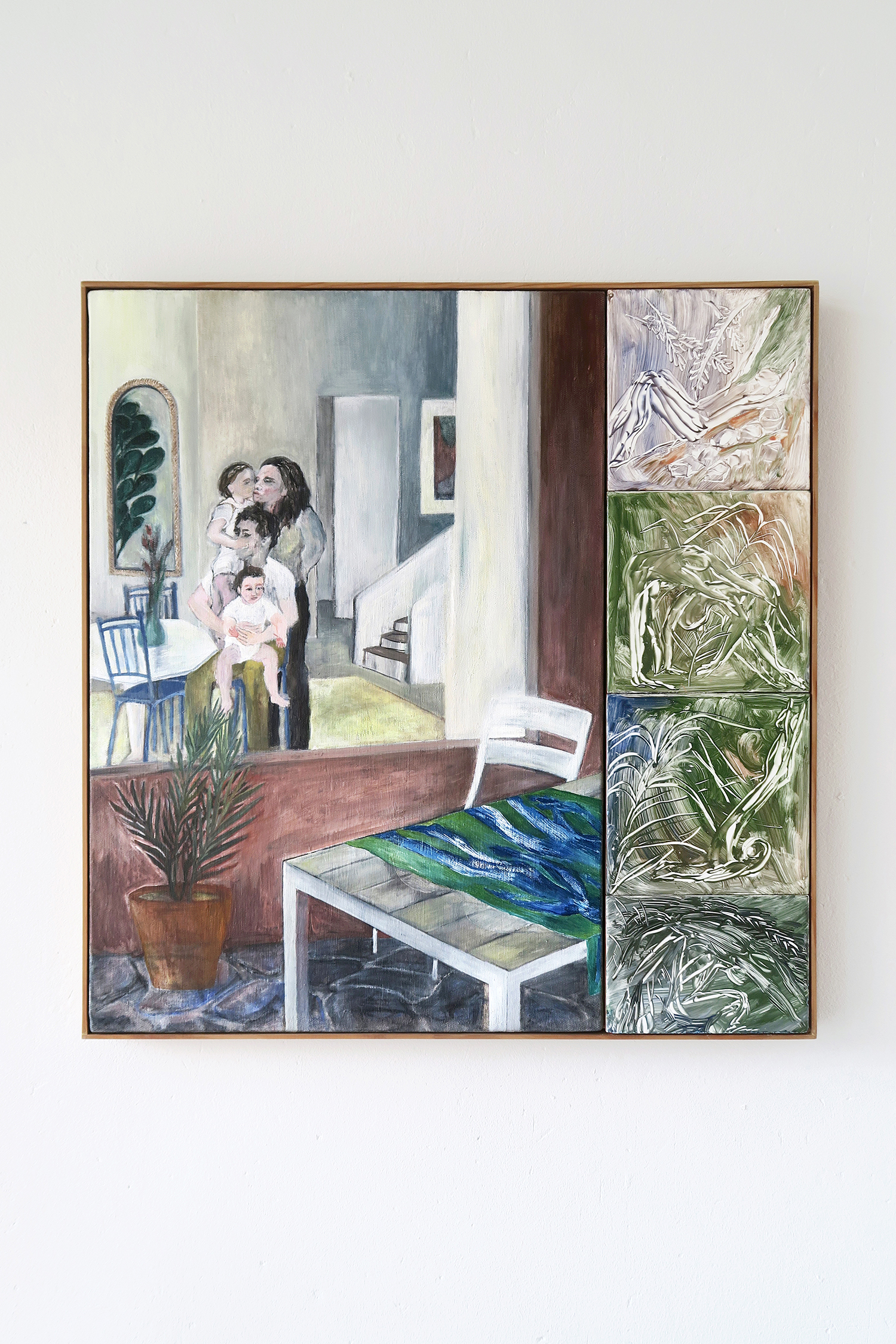
Ordener, 2019 ; watercolour on canvas, painted eathenware tiles, artist frame in oak wood; 56,5 × 54,5 cm

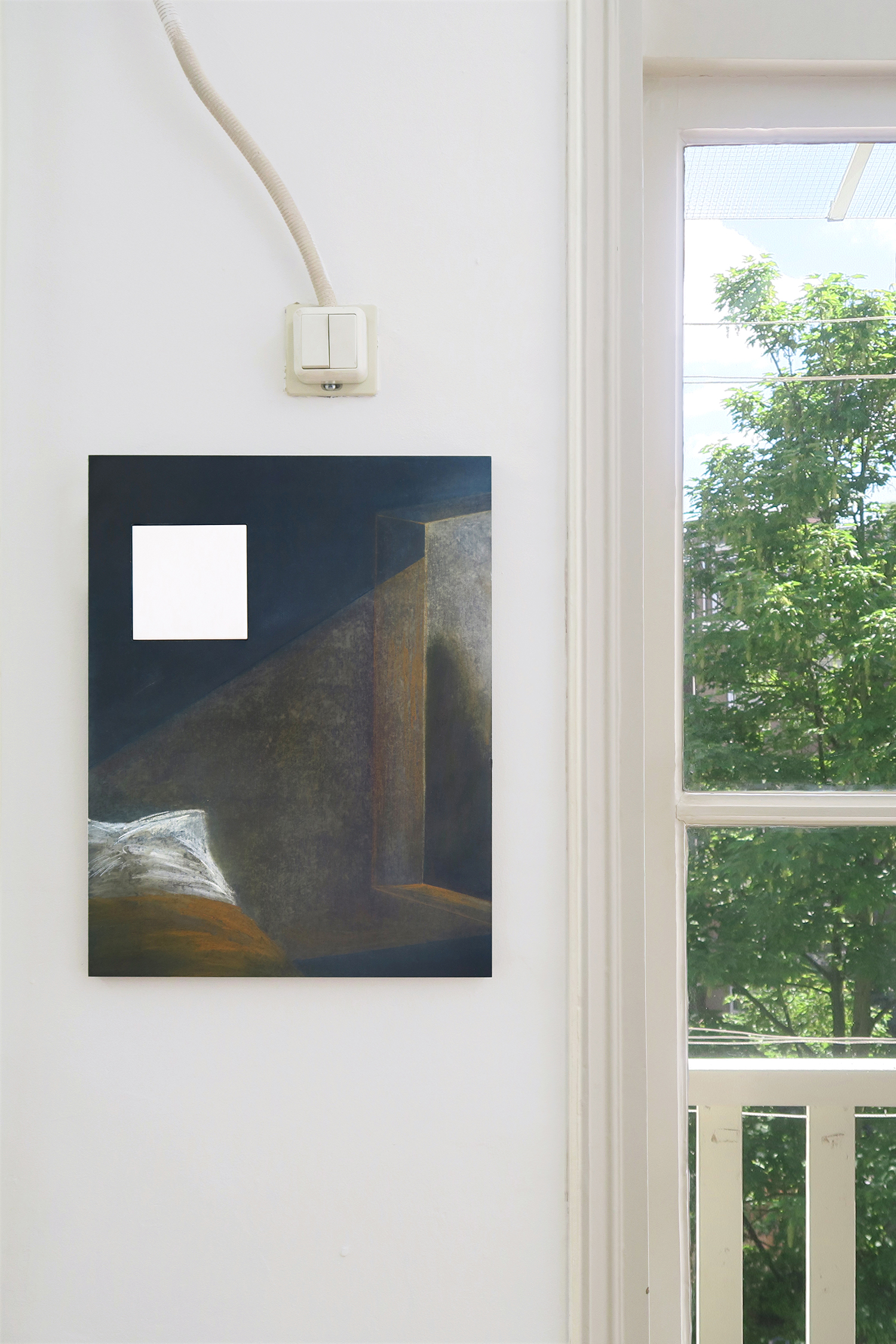
Bedroom with yellow bed, 2019; pastel on wood, ceramic tile; 35 × 45 cm
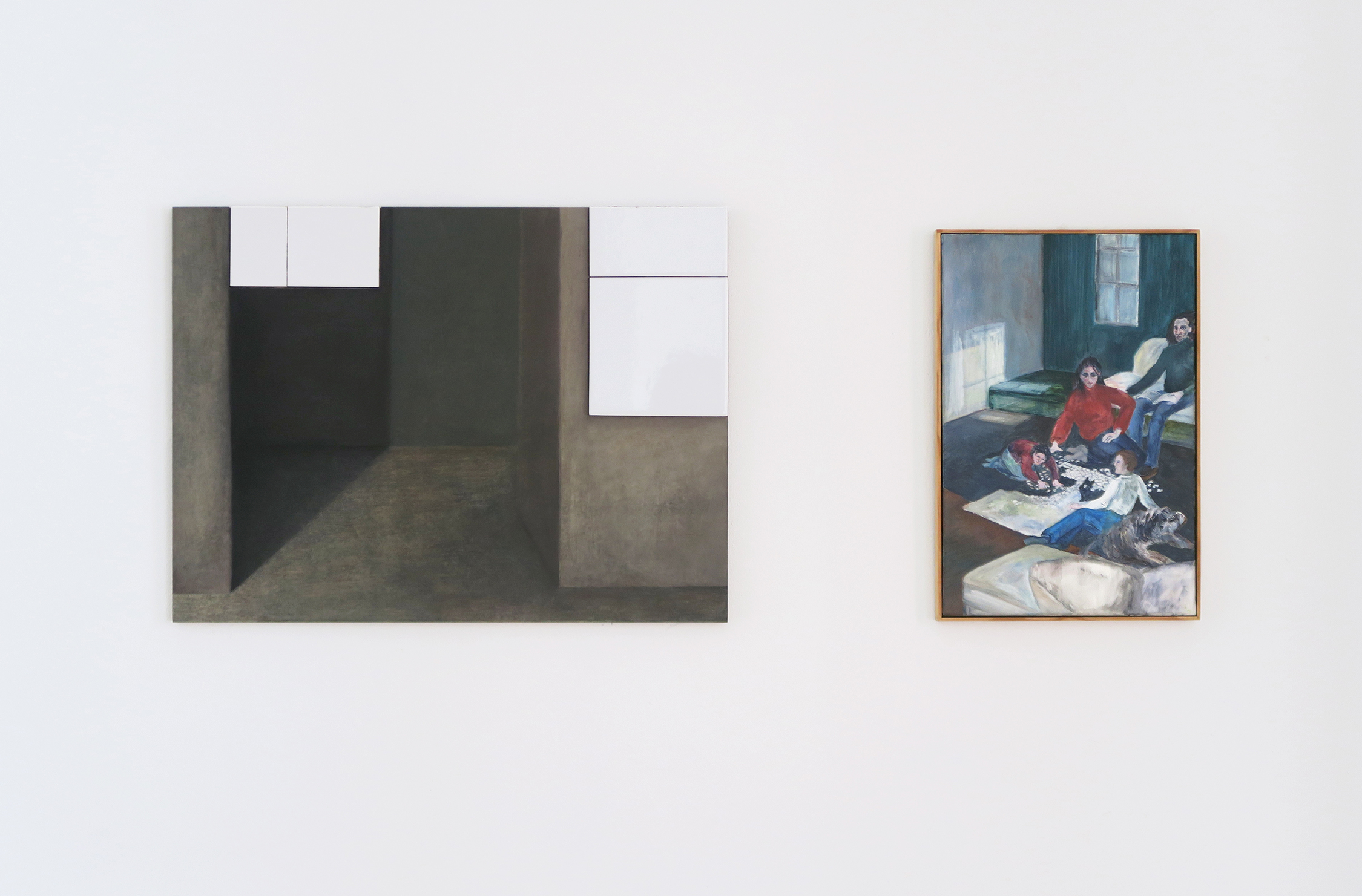

Puzzle, 2019 ; watercolour and gesso on canvas, artist frame in oak wood; 28,5 × 42,5 cm
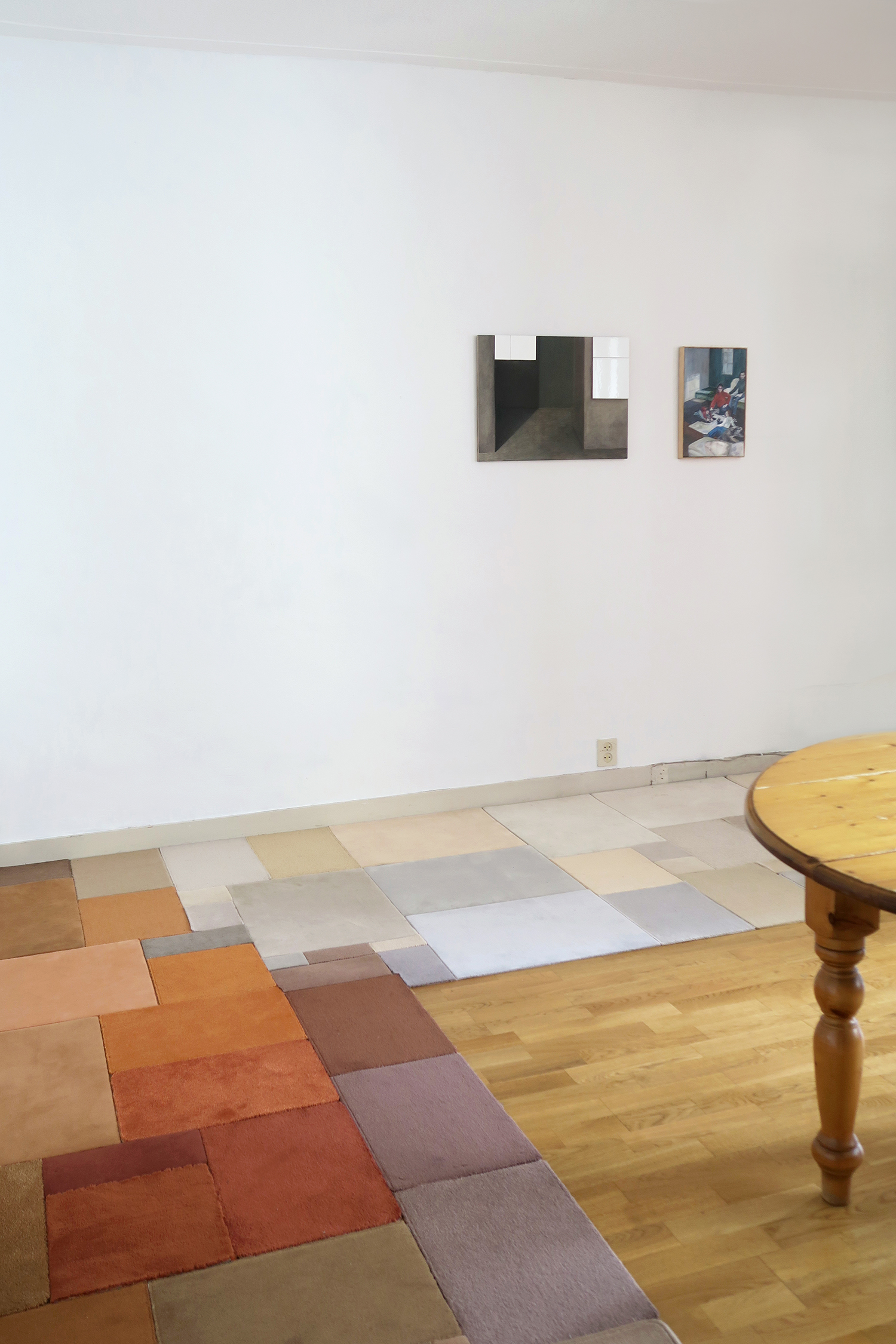
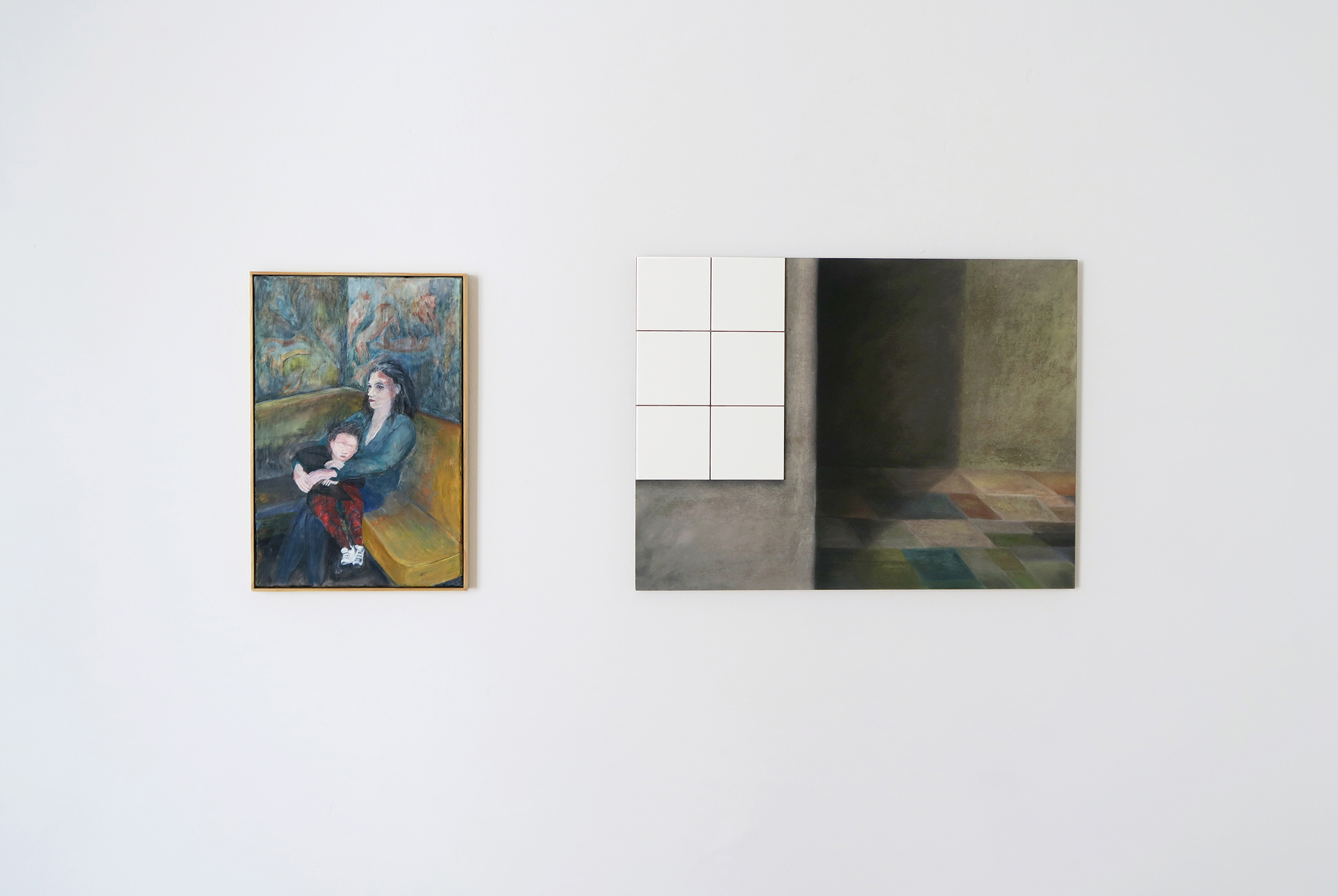
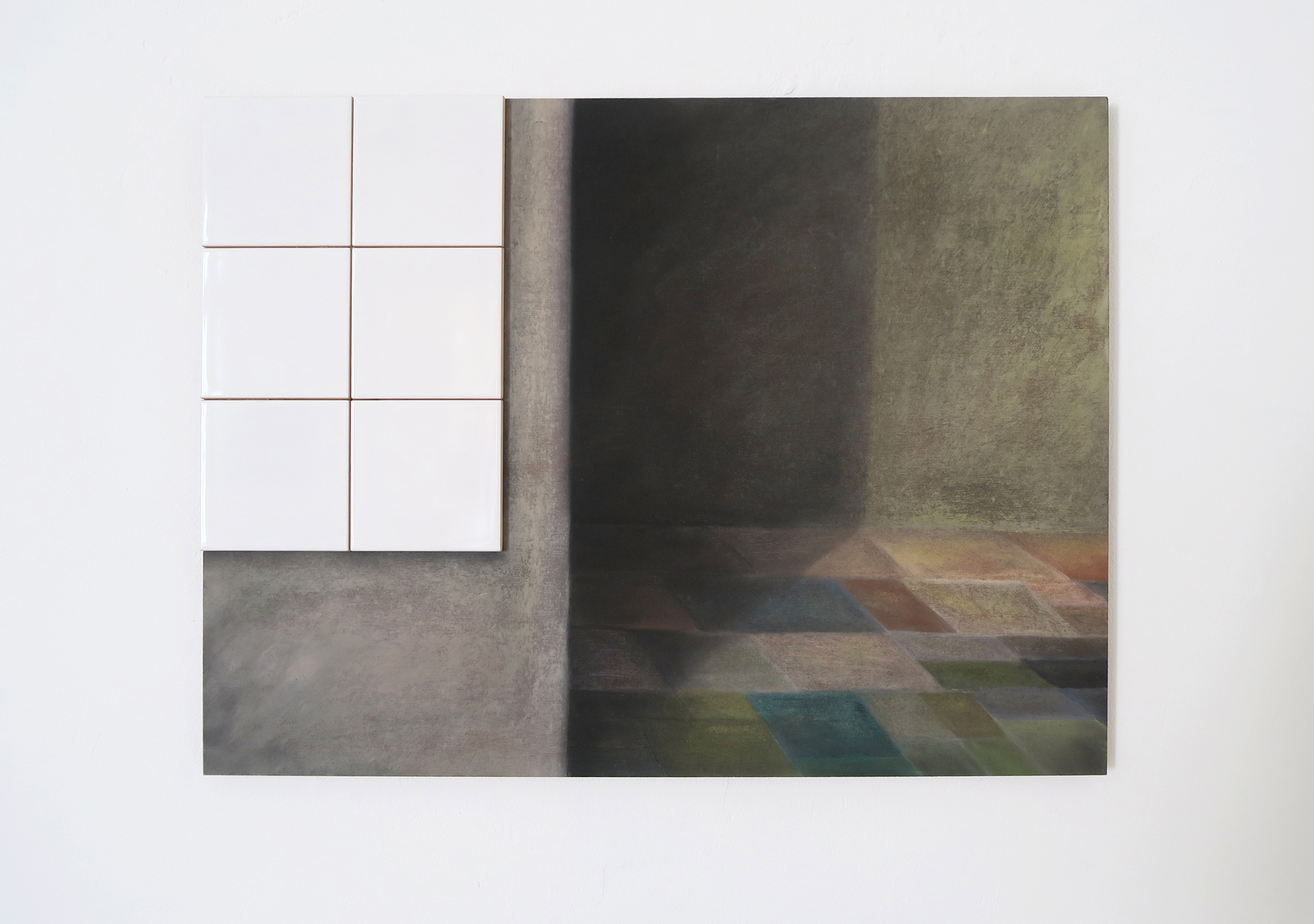
A Room of One’s Own (coloured floor), 2019; pastel on wood, ceramic tile; 45 × 60 cm

Niki, 2019 ; watercolour and gesso on canvas, artist frame in oak wood; 28,5 × 42,5 cm
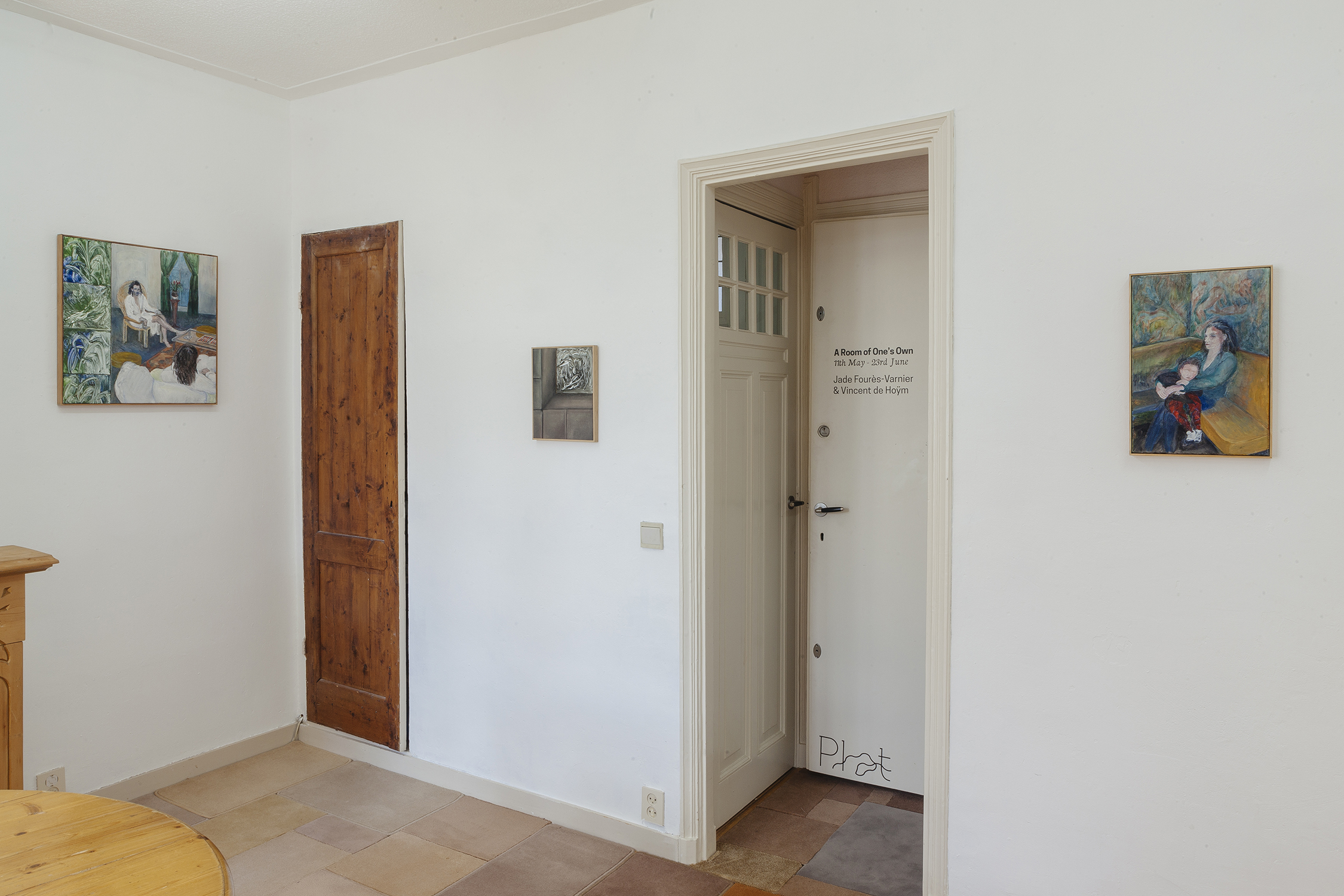
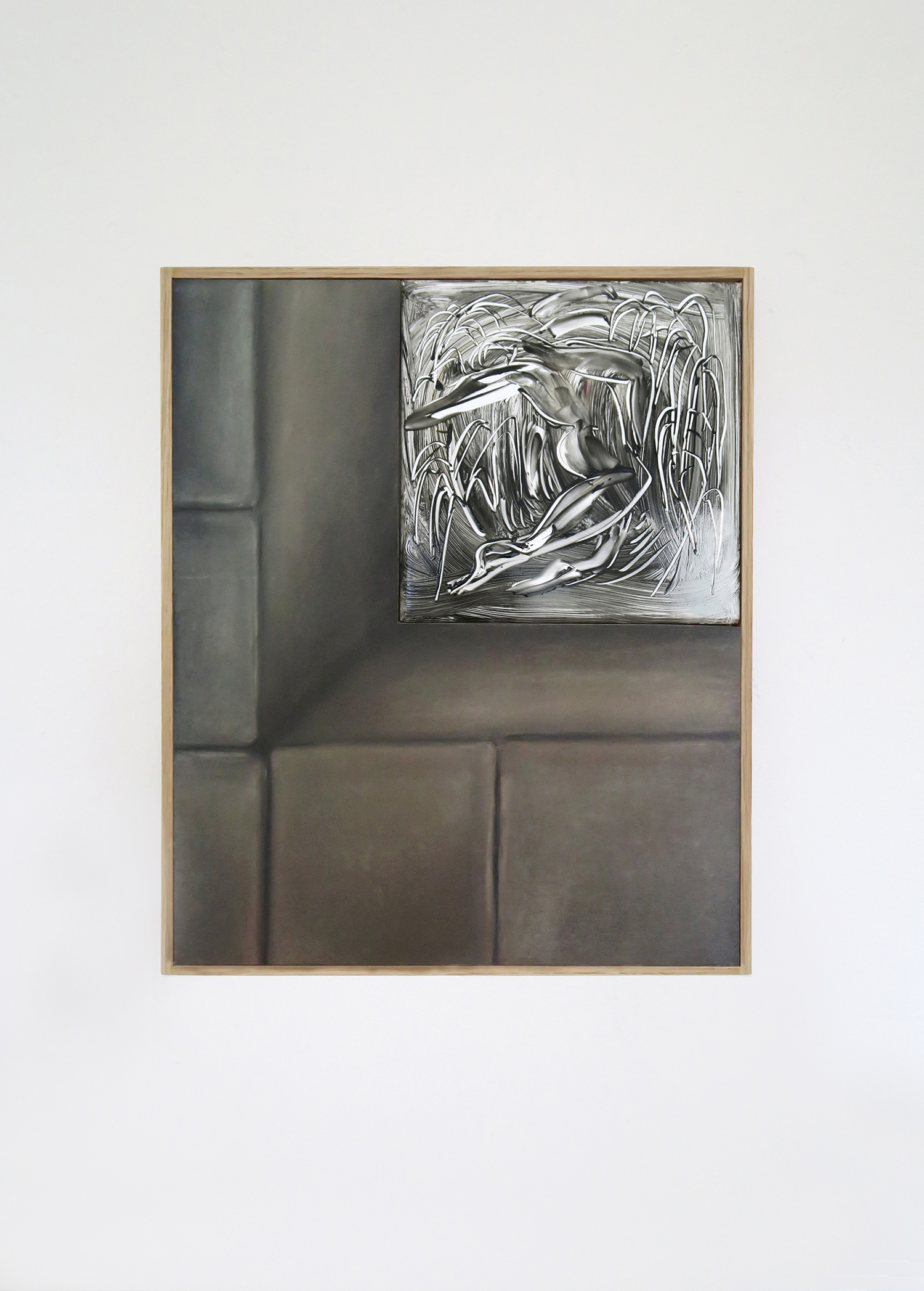
Winter, 2019; pastel on wood, painted ceramic tile, artist frame in oak wood; 26 × 31 cm
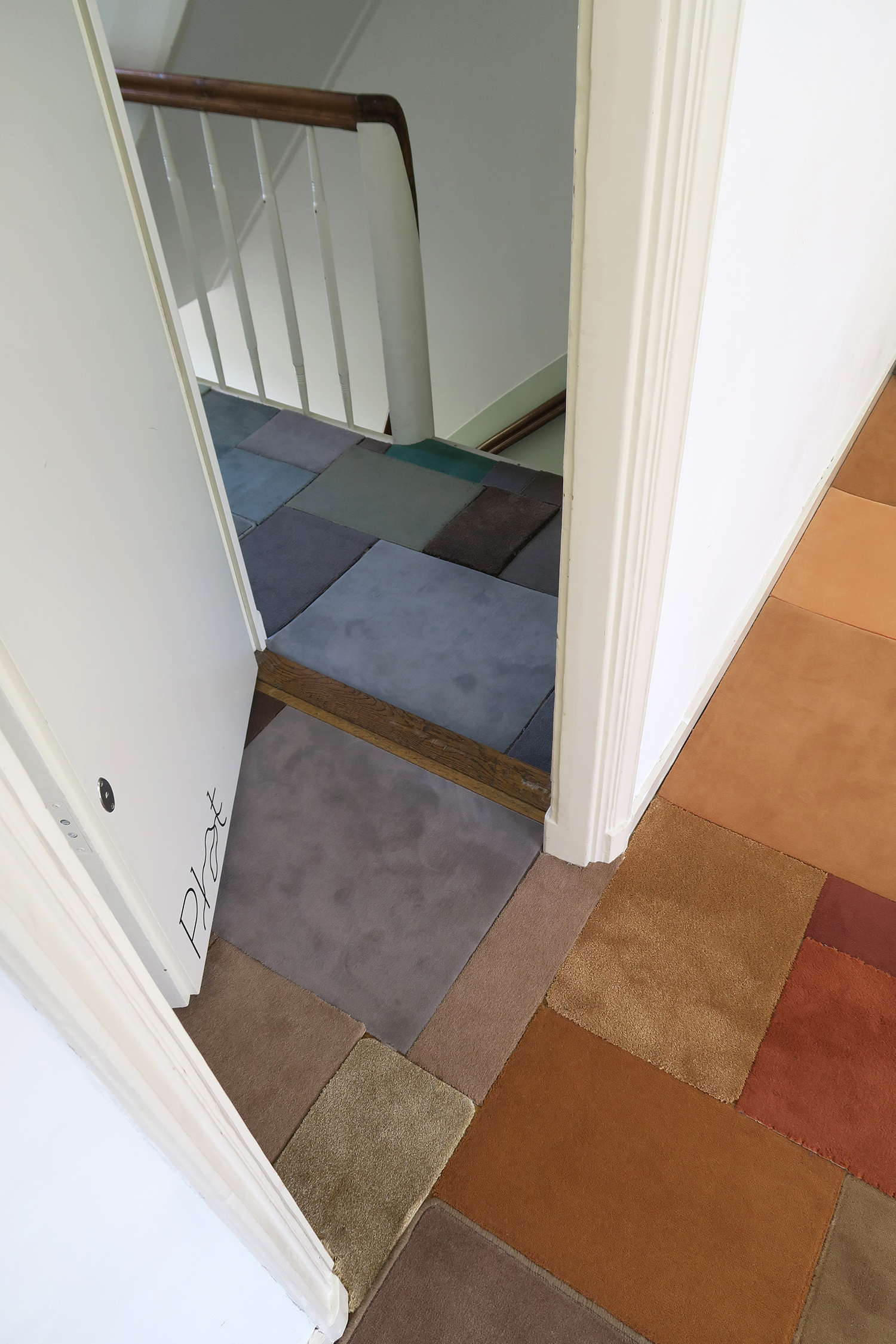
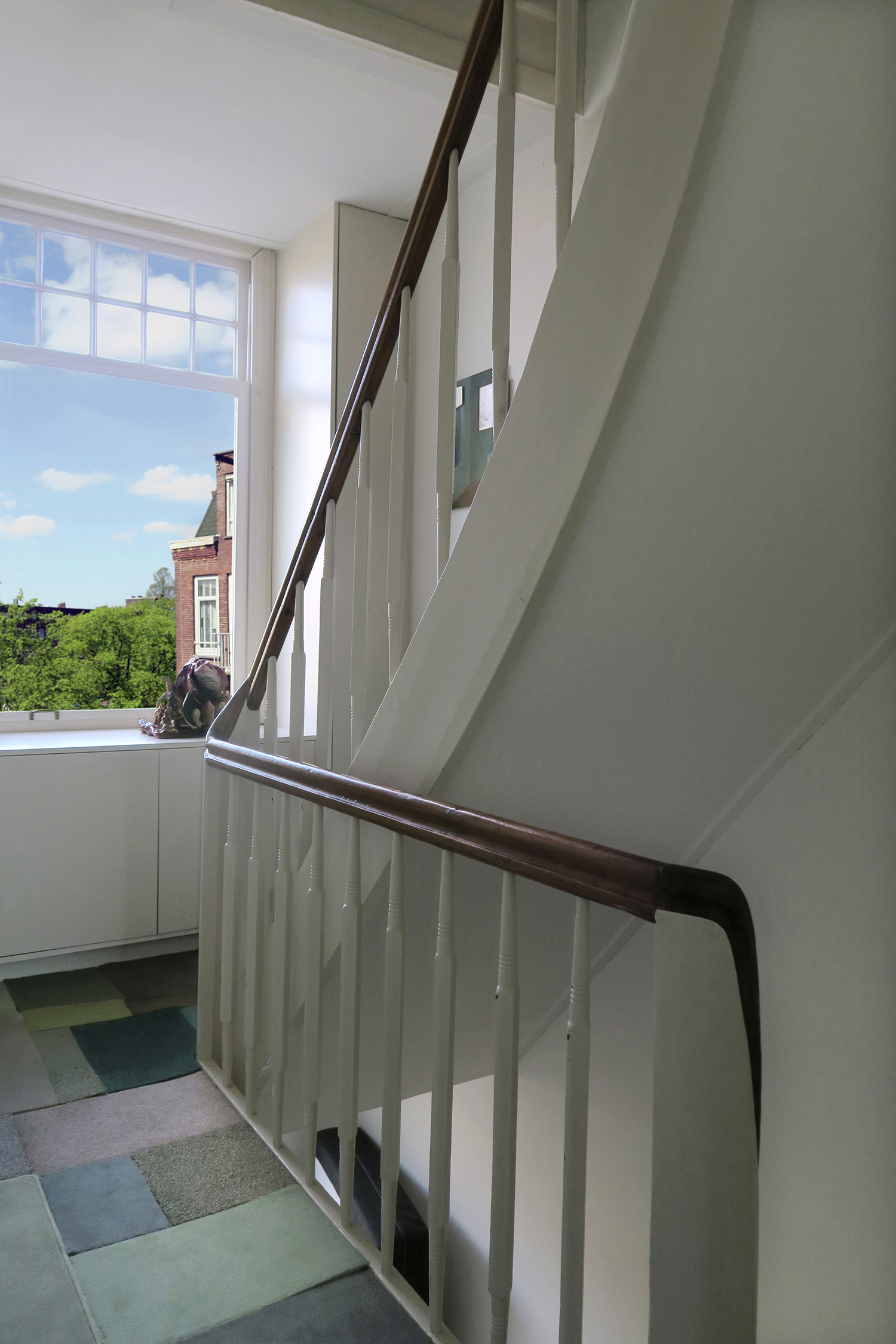
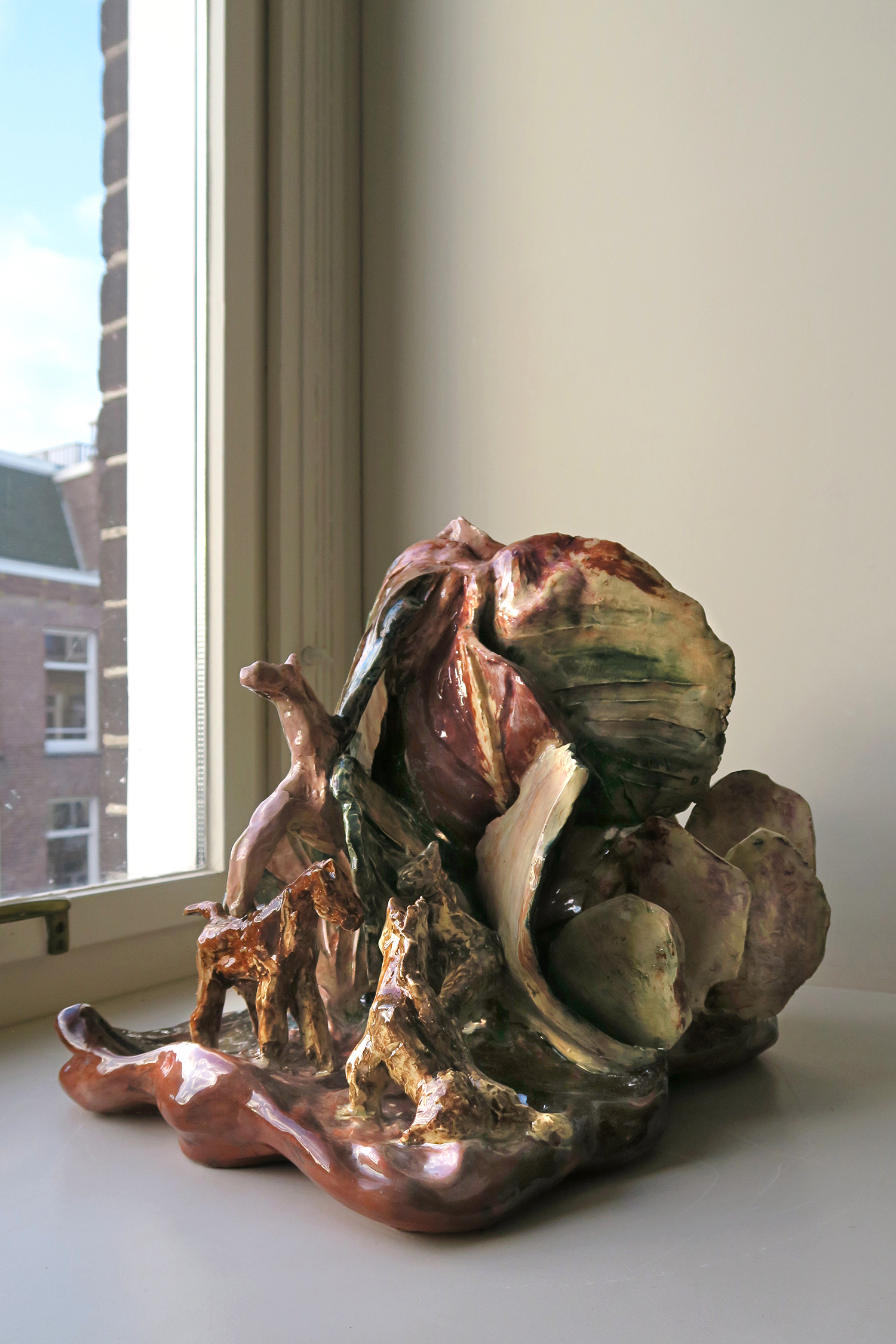
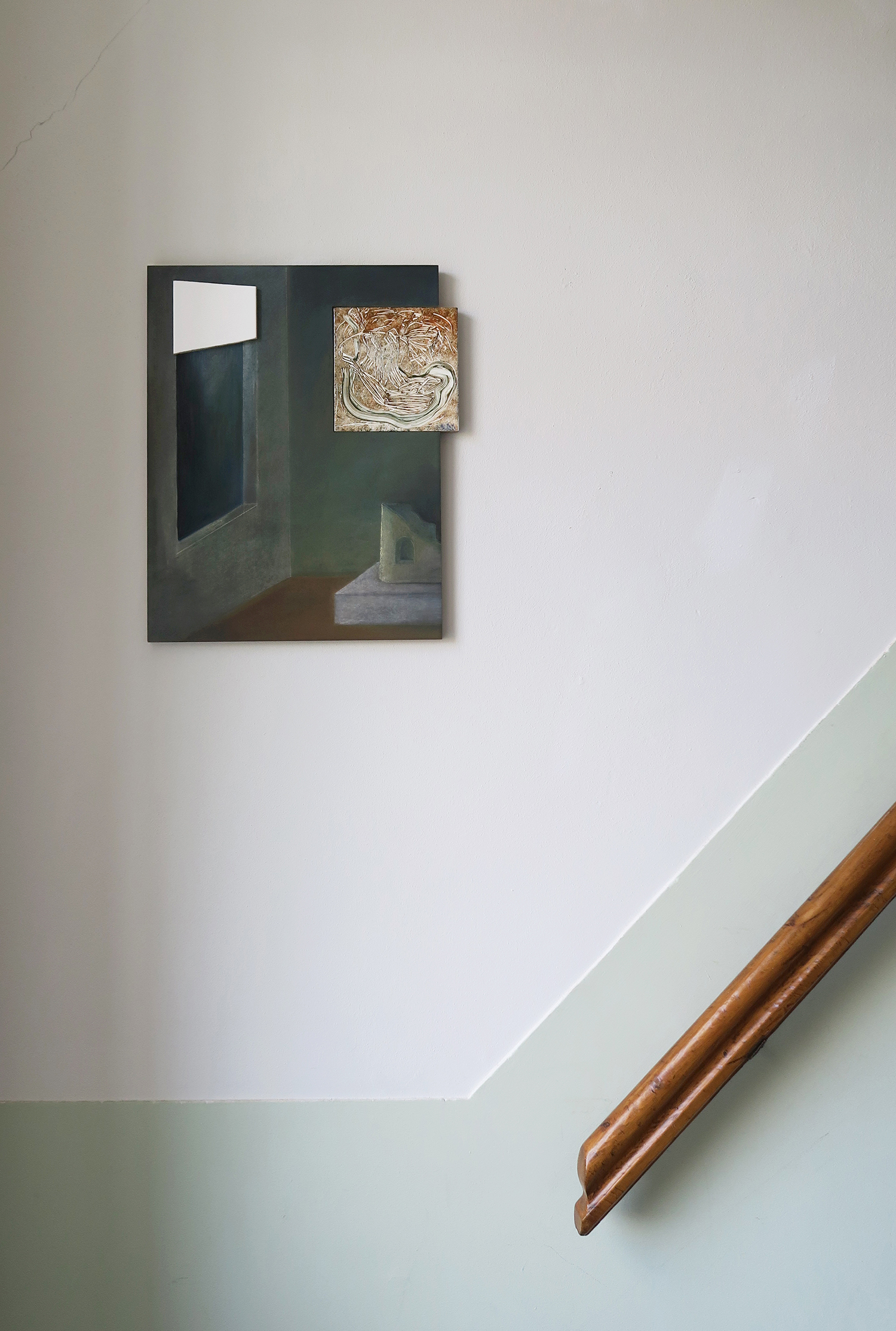
Bedroom with sculpture, 2019; pastel on wood, ceramic tile, painted tile; 37,5 × 45 cm
Photos © Diego Diez and Jade Fourès-Varnier
The first memory of her room was tied to the feeling of uncontrolled expansion: the one that catches onto the fabrics of the world, causing commotion. Radiating beyond her skin, it led her three-year-old arms to fling her bed onto its side: excess energy recomposing the room to which she had fled for security. Surprised, her affect on the surroundings led them to imprint into her memory. Encompassing more than her own body, heat pushed the circumference of her experience beyond her fingertips. She hid, assessing the affect of her emotions from behind the temporary battlements, listening to her mother’s footsteps –which had followed the bang signalling the room’s new constellation– coming closer.
Now she’s several cycles of seven further and has been reading 1930s, 1970s, 2010s essays about women writers and artists. With each finished chapter she feels a kinship: each friction-filled moment in situated life prickling warmly. Volatile, experience leaves her wondering if the heat comes from still-burning embers, or from an abstracted emotion passed on through the words of these decades-old pages. Essays as a torch. Reading becoming the window through which oxygen comes to feed it. She falls asleep to Lucy Lippard. Wakes up to Isabelle Graw. Reads well into lunchtime (re)consuming the words of Virginia Woolf. But with Virginia, she suddenly feels meek behind her battlements. Like a parent, she warns her not to binge on rage: it will not lead her to poetry. She stops and looks. She has a room of her own: space and time to idle and digest. She has the ingredients. Hours upon hours filled with yellow-edged darkness. Boredom collected under her fingernails.
But is she using it?
Experiments between body, bed and bedclothes are made. Can a body fit in a pillowcase? How many insides to a blanket? What variety of wearings can one nightshirt yield? Like the eye of a camera, each nerve on her skin’s edge remembers her child body, the one now shed, tucked snugly into the rectangle of a pillow. An embodied memory transferred. A shadow.
Joan Mitchell raged through painting, but now enjoys posthumous retrospectives. Her firsts, her lasts, her biggests, all on show: the space beyond her brushes coming straight into the centre. Joan was three when Virginia wrote that rage barred women from writing poetry. Perhaps Joan, while Virginia scribbled idly on her notepad, musing on the different tones of voice between her favourite and least favourite poets, was throwing beds or hitting walls with fingertips and knuckles. The first outer gestures. Imprints into space; the realisation that inner movements can recompose surfaces and objects.
Perhaps pens and paintbrushes have different temperaments. The brush yells into a void: each mark recognising its relation to the next until it dives into concentration. The pen, starting as a slow print gaining speed into a scribble whispers words that blow out into a whirlwind of meaning. Lines through thought found in the pen’s linear journey. Diving down the page: summoning the snake to come bite its tail.
But these pictures are brown and green. They contain calm squares. They murmur of puzzles and playtime. While Joan raged in her studio, Jade Fourès-Varnier and Vincent de Hoÿm blend children’s hands with their faces. Squiggles on plates wait to dance with spaghetti. The floor becomes a game. Its representation an abstraction. Abstraction pertaining to Jackson, pertaining to America, pertaining to Joan, pertaining to Paris. Joan pertaining to studios pertaining to hours spent awake pretending to be sleeping. Creating bed compositions. Home compositions. Bodies elongating into squares. Bed squares. Pillow squares. Painting squares.
Dieuwertje Hehewerth